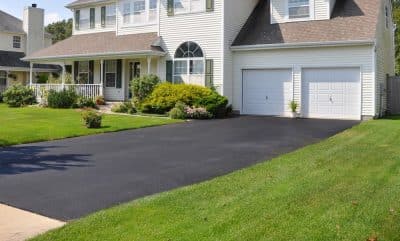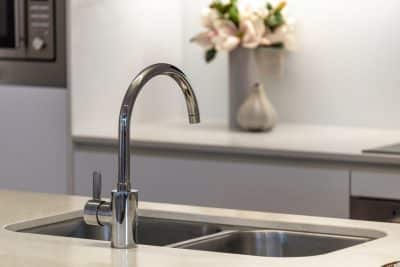
Building a house is one of the most significant investments you’ll make in your lifetime. However, this doesn’t mean it has to drain your finances completely. With proper planning, smart decisions, and a bit of flexibility, you can significantly cut costs without sacrificing quality. Whether you’re constructing a modest home or your dream house, there are strategies you can employ to save money at every step of the process. From selecting the right plot of land to choosing energy-efficient materials and even doing some tasks yourself, there are many ways to build affordably. Below, we’ll explore key methods to keep your budget in check while still crafting the home of your dreams.
1. Choose the Right Plot
Selecting an affordable plot is the first step toward saving money in your home-building journey. Land prices can vary dramatically depending on location, proximity to infrastructure projects, and even the local economy. To lower costs, look for plots that may be considered less desirable due to location near industrial zones, busy roads, or other factors that don’t significantly affect your quality of life. These areas often offer land at a reduced price while still providing all the basic amenities you need.
However, be cautious. Before purchasing land, research critical factors like school district quality, crime rates, flood risks, and local real estate trends. Sometimes cheaper land may come with hidden costs, such as environmental cleanup or poor resale value. Additionally, understand zoning laws and any potential limitations on the land. For example, verify whether local ordinances allow for subdivision if you plan to split the plot with friends or family to save further.
2. Choose Cost-Effective Construction Methods
The construction method you choose has a huge impact on your final costs. Traditional stick-built homes, while customizable, tend to be labor-intensive and require a longer build time. This can lead to higher costs in terms of both materials and labor. Alternatively, consider modular or panelized construction. These methods pre-fabricate parts of your house off-site in a factory setting, which reduces labor time and material waste on-site, thus saving money.
Panelized homes also offer better quality control because much of the construction happens in a controlled environment. While some may think that prefabricated homes sacrifice style or quality, modern modular homes can be designed to meet almost any aesthetic, providing a streamlined, cost-effective option without sacrificing quality.
3. Optimize the Design
The design of your house is a major factor in controlling costs. A simple and efficient design not only minimizes the need for extra materials but also reduces labor costs. Open floor plans with fewer walls and uncomplicated layouts tend to be more affordable than designs that feature multiple wings, corners, or specialized spaces. Complex rooflines with dormers or gables, for instance, can significantly increase your costs. A simple gable or flat roof will cost far less, not just to build but also to maintain in the long term.
Another crucial factor is the size of your home. Many people feel the need to build large, multi-story homes, but this isn’t always necessary. A smaller, well-designed home can offer everything you need while being more energy-efficient and easier to maintain.
4. Shop Around for Materials
Buying construction materials is one of the areas where you can make significant savings. Don’t just rely on your contractor to purchase all the materials. Take the time to shop around for better prices on essentials like lumber, insulation, windows, and fixtures. In some cases, contractors may even offer you a discount if you purchase the materials directly, as it reduces their upfront costs.
It’s also worth exploring alternative or recycled materials. Many suppliers offer reclaimed wood, recycled metal, and other eco-friendly building materials at a fraction of the cost of new ones. These materials can add character to your home while helping reduce your overall budget. Moreover, shopping during off-season sales or purchasing surplus materials from local builders can provide further savings.
5. Use Energy-Efficient and Sustainable Materials
Incorporating energy-efficient features during construction may have a higher upfront cost, but it will save you money in the long run by reducing utility bills. Focus on insulation with a high R-value, which helps maintain temperature more effectively and reduces the need for heating and cooling. Consider using energy-efficient windows, doors, and appliances. For instance, double-glazed windows prevent heat loss during winter and keep your home cool in summer, leading to long-term savings on energy bills.
Sustainable materials, like bamboo flooring or reclaimed wood, are often more affordable and help reduce environmental impact. Using recycled materials also enhances the eco-friendliness of your home and can sometimes qualify you for tax rebates or other incentives.
6. Hire the Right Contractor
Choosing a trustworthy and experienced contractor is crucial. While it might be tempting to hire the contractor offering the lowest bid, this can often result in more expenses down the road. Make sure to get multiple bids from contractors and carefully review each one. The lowest bid might not include necessary elements such as permits or insurance, leading to costly surprises later.
When selecting a contractor, ask for references and visit some of their previous projects if possible. An experienced contractor will be more likely to stick to your budget and timeline, helping you avoid costly delays and mistakes.
7. Take on DIY Tasks Where Possible
Sweat equity is one of the best ways to save money when building a house. While certain tasks like electrical work and plumbing should always be left to licensed professionals, there are several less specialized tasks you can tackle yourself. Painting, landscaping, and installing interior fixtures like lighting or kitchen cabinets are all areas where you can save on labor costs.
However, be realistic about your abilities. Taking on tasks beyond your expertise can result in mistakes that cost more to fix than hiring a professional would have in the first place. Focus on the tasks that you can confidently complete, and leave the rest to the pros.
8. Monitor the Budget and Communicate
Budget management is one of the most critical elements of any construction project. Many homeowners start with a rough estimate of costs but fail to monitor spending as the project progresses. This often leads to budget overruns and financial stress. Create a detailed budget at the beginning of the project and update it regularly to track every expense.
Communication with your contractor is also key. Make sure you are updated on the progress and any issues that arise. If there are any changes in the project plan, such as material substitutions or delays, address them immediately to avoid unexpected costs. Clear, constant communication helps prevent misunderstandings and ensures that your project stays on track.
Conclusion
Building a house can be a costly endeavor, but with careful planning, smart choices, and a bit of hands-on involvement, you can significantly reduce costs without sacrificing quality. From choosing the right plot to selecting cost-effective materials and staying involved in the building process, every step offers an opportunity to save money when building a house. By following these tips, you’ll be able to build a beautiful, functional home that fits both your dreams and your budget.








